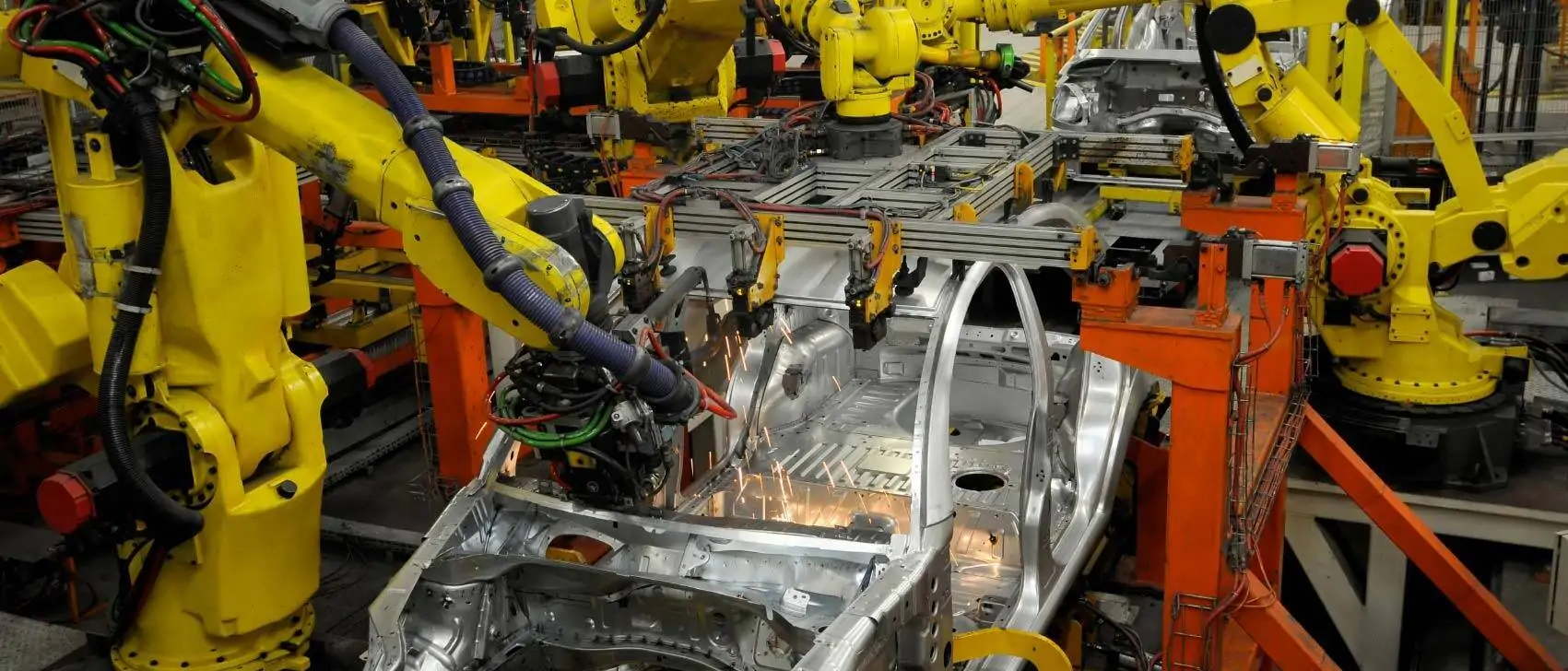Networked production, computer-integrated manufacturing
Computer-integrated manufacturing, or CIM for short, refers to computer-controlled machine and automation systems (computer-integrated production) that are generally used in the manufacturing of products. CIM relies on a range of technologies and their technical functions, such as computer-aided design (CAD), computer-aided planning (CAP), computer-aided manufacturing (CAM) and computer-aided quality assurance (CAQ). The combination of different sub-technologies reduces manual work steps and automates repetitive tasks. The goal of CIM was and is end-to-end computer-aided information processing based on a cross-functional database.
In 1973, Joseph Harrington presented the concept of ‘Computer-integrated Manufacturing’ to the public. The automation expert wanted to draw attention to the possibility of linking information in the machine production and to merge so-called isolated applications (e.g. CAD, CAP, CAM, CAQ). See also ‘possible components of CIM’. Nowadays, we speak of an integration or a production approach that is based on the complete automation of a production. The manufacturing can take place across companies.
According to Prof. Dr.-Ing. Jürgen Gausemeier, Heinz Nixdorf Institute – University of Paderborn, three main business processes arise from this functional view:
- Product development process (e.g. CAD, PDM)
- Order processing (e.g. ERP system, production planning and control, PPS)
- Manufacturing process (e.g. CAM)
Important: Unlike the software-based solutions used in product development and order processing, the manufacturing process in particular is supported by so-called numerically controlled work systems (hardware). These include CNC machines, industrial robots and programmable logic controllers (PLC).
Possible components of computer-integrated manufacturing
- Computer Aided Design (CAD) – computer-aided design / design drawing
- Prototype production
- Computer Aided Planning (CAP) – information / data for parts production and assembly instructions
- Ordering the materials required for the manufacturing process
- Computerized Numerical Control (CNC) – computer-aided manufacturing of products with the help of numerical controls (machine control)
- Computer Aided Manufacturing (CAM) – transmits the design data (NC code) to the CNC machine in electronic form.
- Computer Aided Quality Assurance (CAQ) – quality assurance
- Production Planning and Control (PPC)
- Operating data collection (ODC (german: BDE)) – Database / databases for all required order data, personnel data, machine data and process data
Important: An additional component of the collective term Computer-integrated Manufacturing can be the determination of the efficient manufacturing method by cost calculation and consideration of the production methods, product quantity, storage and distribution.
Advantages of the CIM idea
At the beginning of digitalization, the CIM components mentioned above were mostly used as isolated solutions for specific problems – the components could not be used across departments or companies. In particular, data exchange between the different systems was done manually and using external data carriers (floppy disks, magnetic tapes). This resulted in slow and error-prone process steps. These inadequacies led to the demand for a common database for all departments and machines involved in the product development process, based on Joseph Harrington’s computer-integrated manufacturing concept.
The linking of data and machines in equal measure increases the speed of the manufacturing process and automates it with the help of sensors and control loops, thanks to today’s technical possibilities and networking. Advantages: Multiple manual data entry is prevented; the number of possible sources of error is reduced, data consistency and timeliness are ensured.
Summary:
CIM is a combination of various applications and technologies such as CAD, CAM, manufacturing robotics, manufacturing resource planning and enterprise management solutions. It can also be seen as an integration of all company operations that work with a common data repository and ultimately aim at industrial, computer-controlled and automated machine production.
Abramovici, Schulte 2004, p. 5 / Encyclopedia of Business Informatics
Teaser image: CC BY-SA 4.0 / newsandletters.org
